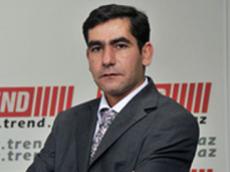|
|
TODAY.AZ / World news
Ahmadinejad and half trillion USD oil income
06 September 2012 [18:44] - TODAY.AZ

With the passing of 15 months from Iran's former Mine and Industry Minister Eshagh Jahangiri's statement about Ahmadinejad administration's $450 billion oil crude revenues until March 2011, former deputy of Iran's oil minister Akbar Torkan updated the figure on Aug.4, saying Iran's oil revenues during Ahmadinejad's seven-year long two terms of the presidency (from June 2005 till now) has totalled to $531 billion.
It is now 103 years after the first crude oil production from Iran's Masjed Soleyman oilfield, a project which became operational after seven years of excavation starting in 1901. Mehr News Agency quoted Torkan as saying the country's total oil incomes since 1908 have amounted at $1116 billion, including $140 billion until the Islamic revolution occurred in 1979 and $976 billion afterwards.
Iran's crude stats during Ahmadinejad's presidency published by OPEC
|
|
Iran oil revenues/ USD |
oil output/ mbpd |
Oil export/ mbpd |
|
2005 |
46.6 |
3.845 |
2.5* |
|
2006 |
57.7 |
3.924 |
2.25* |
|
2007 |
66.2 |
4.030 |
2.639 |
|
2008 |
87 |
4.055 |
2.574 |
|
2009 |
56.34 |
3.557 |
2.406 |
|
2010 |
71.57 |
3.544 |
2.583 |
|
2011 |
114.7 |
3.576 |
2.537 |
|
|
Total: 500.1 |
|
|
* Based on official stats, not available in OPEC annual reports
Poverty and power of mass
A historic and unprecedented presidential event occurred on May 1997, when Ahmadinejad's predecessor Mohammad Khatami attracted unpredicted votes during presidential elections. He was elected by almost 70 per cent of the vote, while 80 per cent of eligible voters participated, a great voting record for presidential elections in Iran. This was the power and support of mass for reformist Khatami.
Ahmadinejad during his election campaign in 2005 promised to "battle against corruption and bring the oil income to people's tablecloth", a slogan that apparently was aimed to get strong support of the masses during the presidential election with rivals.
After winning the presidential elections, Ahmadinejad continued the populist policy to form a stronger government relying on mass power, by paying billions of dollars' worth of loans for jobless people, building cheap houses for poor ones, cutting subsidies and transferring cash money to citizens' bank accounts and opening ports for imports to keep commodity prices low.
The outcome of this disputed policy has been an increase in the liquidity to $296 billion, an inflation rate of 23.6 per cent and unemployment rate to 16 per cent. According to the IMF, Iranian GDP growth is expected to fall to 0.4 per cent in 2012, while most of Iranian firms work at half capacity because of sanctions, irregular imports and slump. Finally, the intention to turn the liquidity to gold and the Forex market because of losing the value of national currency, slump in industry and open housing market.
This is not the end of story. Amount of Iran's surplus gas for export remained approximately unchanged, while its oil output decreased from 4.1 to 2.817 million barrels per day during Ahmadinejad's seven-year presidency. Iran's 50 per cent of revenues relies on oil exports.
Gaining $531 billion in seven years was a great chance for Iran to accelerate industrial progress, to make the economy stronger and develop both upstream-downstream energy projects. However, it does not happen.
Torkan says Iran's imports have been $483 billion worth since 2005, while 83 per cent of those were consumer goods and intermediate products.
Dalga Khatinoglu /Trend/
URL: http://www.today.az/news/regions/112065.html
 Print version
Print version
Connect with us. Get latest news and updates.
See Also
- 04 September 2025 [23:33]
Ankara, Damascus launch comprehensive cooperation in education following ministerial visit - 04 September 2025 [22:30]
Kia reaches major sales milestone in Australia after decades of growth - 04 September 2025 [21:50]
HD Hyundai Samho secures major oil tanker order from African client - 04 September 2025 [21:20]
Porsche leaves Germany's main stock index - 04 September 2025 [20:21]
Tesla launches app for booking self-driving robotaxis - 04 September 2025 [19:21]
Minister Gökta? unveils family-centred reforms to tackle birth rate decline - 04 September 2025 [18:40]
Canada joins EU and UK in cutting Russian oil price limit - 04 September 2025 [14:33]
BTA head re-elected as Secretary General of Association of Balkan News Agencies – Southeast Europe - 04 September 2025 [11:23]
US delegation to discuss “Trump Route” (Zangazur Corridor) project in Armenia - 04 September 2025 [09:00]
UK bans energy drink sales to under-16s
Most Popular
 India has failed Armenia and the "Shanghai Spirit"
India has failed Armenia and the "Shanghai Spirit"
 Armenia ceases to be invisible - thanks to Azerbaijan
Armenia ceases to be invisible - thanks to Azerbaijan
 5th round of Brazil-Azerbaijan political consultations held
5th round of Brazil-Azerbaijan political consultations held
 Azerbaijan, Brazil hold inaugural meeting of Working Group on Trade and Investment
Azerbaijan, Brazil hold inaugural meeting of Working Group on Trade and Investment
 Lithuania renews debate over four-day workweek
Lithuania renews debate over four-day workweek
 Baku predict fate of Minsk Group back in 2020
Baku predict fate of Minsk Group back in 2020
 President Ilham Aliyev meets China National Chemical Engineering in Tianjin
President Ilham Aliyev meets China National Chemical Engineering in Tianjin
